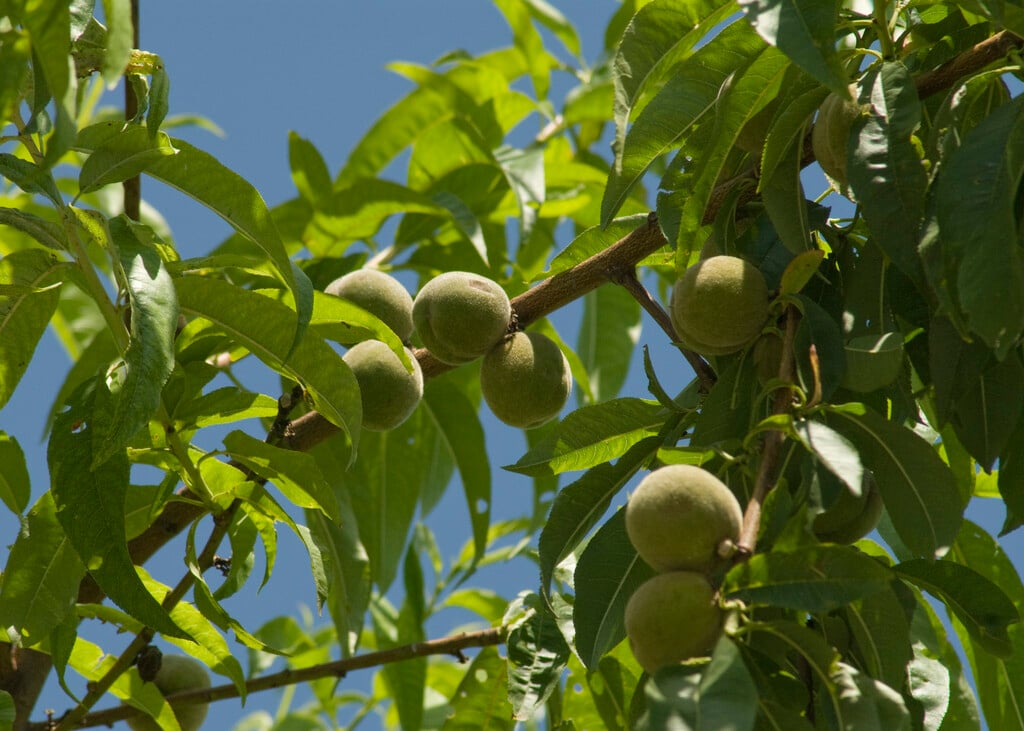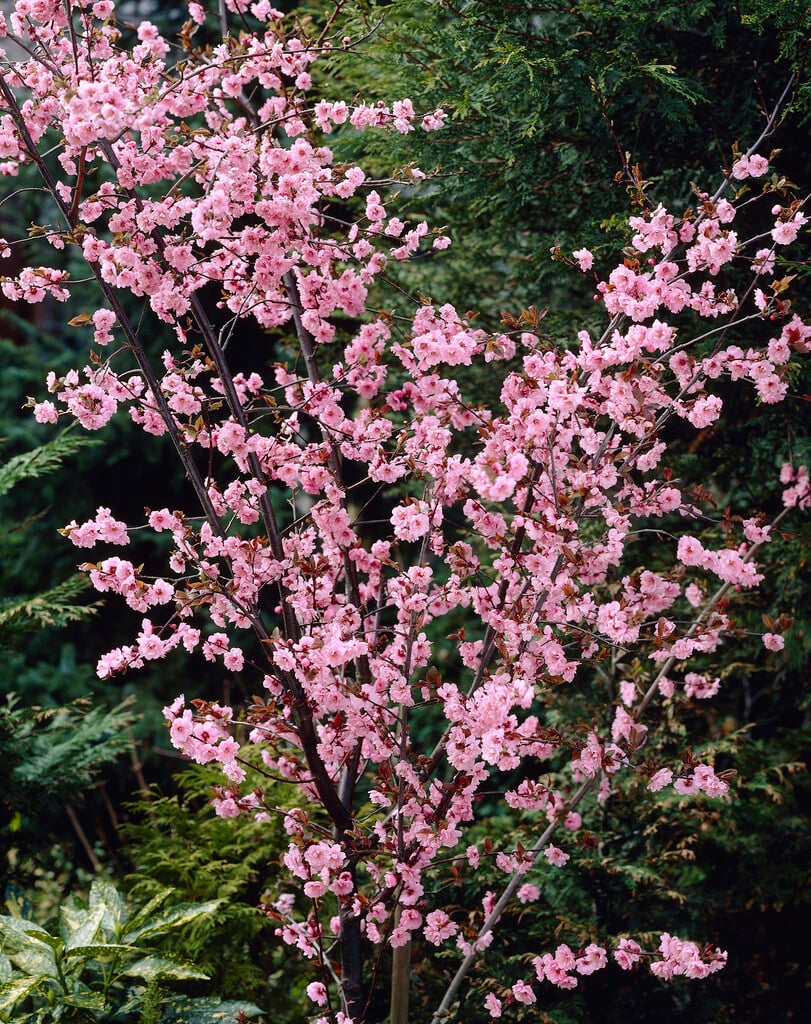Prunus persica
peach
A spreading, deciduous tree to 6m, with narrow, glossy, mid- to dark green leaves up to 15cm long. Bowl-shaped, pink or red flowers, 4cm across, are produced in spring, before the leaves, followed by spherical, downy, edible, red-blushed, yellow fruit. Many cultivated varieties of peach have been raised from this species. Whilst the fruits of the species are edible, it is more commonly used for ornamental purposes as the height would make harvesting difficult. The species is also used as rootstock for more commonly grown fruit cultivars
Size
Ultimate height
4–8 metresTime to ultimate height
10–20 yearsUltimate spread
4–8 metresGrowing conditions
Moisture
Moist but well–drainedpH
Acid, Alkaline, NeutralColour & scent
| Stem | Flower | Foliage | Fruit | |
| Spring | Pink White | Green | ||
|---|---|---|---|---|
| Summer | Green | Red Yellow | ||
| Autumn | Green | |||
| Winter |
Position
- Full sun
Aspect
South–facing or West–facing
Exposure
Sheltered Hardiness
H4Botanical details
- Family
- Rosaceae
- Native to GB / Ireland
- No
- Foliage
- Deciduous
- Habit
- Spreading branched
- Genus
Prunus can be deciduous or evergreen trees or shrubs with showy flowers in spring, and often good autumn foliage colour. Some have edible fruit in autumn, and a few species have ornamental bark
- Name status
Correct
How to grow
Cultivation
Grow in a moist, but well-drained soil in full sun. Protect flowers from frosts with biodegradable horticultural fleece. Best grown fan-trained, although in the south of England can be grown free-standing bush. See How to grow: Peaches for further cultivation details
Propagation
Propagate by seed sown in containers outdoors in autumn; or by softwood cuttings, with bottom heat, in early summer. Peach cultivars are propagated by grafting
Suggested planting locations and garden types
- Cottage and informal garden
- Wildlife gardens
- Wall side borders
- Edible fruit
Pruning
In milder areas, and in warm sheltered situations may be grown as a free-standing tree, but generally best grown as a fan. Prune after harvest, see Fan trained trees and Pruning established fans. Trees grown for ornamental purposes need little pruning: Pruning group 1.
Pests
May be susceptible to aphids and caterpillars
Diseases
High Risk Host for Xylella fastidiosa. May be susceptible to bacterial canker, blossom wilt, brown rot, honey fungus, peach leaf curl and silver leaf.
Get involved
The Royal Horticultural Society is the UK’s leading gardening charity. We aim to enrich everyone’s life through plants, and make the UK a greener and more beautiful place.

